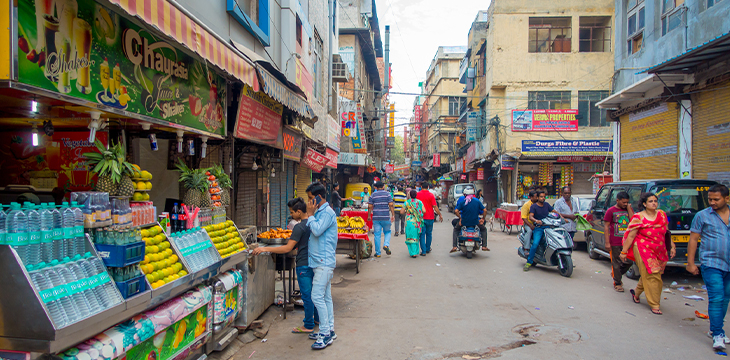|
Getting your Trinity Audio player ready...
|
Digital modes of payment account for about 69% of total transaction volumes for Indian merchants, with street vendors such as fruit and flower sellers, food stalls and small stores joining the digital payment revolution. On average, these vendors receive almost half of their payments digitally, revealed a survey by consulting firm Kearney, in association with Amazon Pay (NASDAQ: AMZN).
However, cash is still the most preferred mode of payment for transactions with a value of less than Indian Rupee 500 ($6).
The research was conducted with over 6,000 consumers through an online survey and with over 1,000 merchants through offline and online methods across 120 cities, with representation from various regions, income groups, city categories, age brackets and genders.
The survey, however, pointed out that merchants face challenges similar to those raised by consumers, such as financial fraud and limited connectivity.
The world’s fastest-growing major economy has witnessed a record surge in digital payments as it strives to become a digital powerhouse while leveraging emerging technologies as a catalyst for economic growth.
“In line with India’s digital journey, retail digital payments have grown dramatically over the past five years—from $300 billion in FY18 to $3.6 trillion in FY24. By FY30, it’s likely to double to US$7 trillion,” the survey said.
UPI a key growth driver
The survey noted that the Unified Payments Interface (UPI) has been a key driver of this growth, demonstrating a compound annual growth rate (CAGR) of 138% in its volumes from fiscal year 2018-2024. The South Asian nation introduced the UPI in 2016, which enables instant money transfers using mobile phones and works as a single mobile application for accessing different bank accounts.
“Indian innovations are already going global with UPI now accepted in seven countries and a planned expansion to nearly 20 countries by 2029. The country’s cash-based transactions have trickled down to less than 60% as more consumers and merchants adopt digital payments,” the report said.
Other instruments, such as cards and digital wallets, are also gaining popularity, contributing about 10% of the digital transaction value. The world’s most populated nation has also seen a surge in e-commerce, with the market valued at $75 billion to $80 billion in 2022 and expected to grow at a 21% CAGR until 2030, the survey stated.
The research reveals that men and women are progressively and almost equally embracing digital payment technologies due to improved literacy rates, higher workforce participation and proactive government and private sector initiatives. This is a notable building block toward financial inclusion.
Smaller towns, cities to drive digital payment growth
Digital payment methods have penetrated well into smaller cities and towns alongside the larger cities. The survey categorizes small cities with a population between 500,000 and 1.5 million, while small towns are classified with a population of less than 500,000.
Although UPI has made significant inroads into small cities and towns, there is a noticeable gap in credit card usage, with respondents from small cities and towns reporting that 5–6% of their transactions are conducted with credit cards. This is also reflected in the credit card penetration across city categories, with larger cities having a significantly larger share of the active card base than smaller cities and towns, the report said.
Small towns also show potential for greater uptake of digital wallets, with respondents from these areas using them in 9% of transactions, slightly behind other city categories.
Merchants prefer convenience, safety
The adoption of UPI as a payment method is remarkably consistent across business sizes. However, smaller businesses tend to receive more cash transactions.
Across merchant types, the top reasons for preferring digital payments are convenience, trust and safety, and the ability to track transactions. Also, 63% of merchants say they accept digital payments for transactions under INR 1,000 ($12) to prevent consumers from going to competitors that accept digital payments.
However, about 40% of merchants said they are hesitant to adopt online payments because they prefer cash transactions and need greater confidence in new technology.
Digital payment frauds
A record surge in India’s digital payments has also led to a jump in digital payment frauds.
Data from Reserve Bank of India’s (RBI) annual report show that digital payment fraud in India jumped to a record 14.57 billion rupees ($175 million) in the fiscal year that ended in March 2024 (FY2023-24). Card or internet-based frauds accounted for about 80% of total bank and financial institution frauds in FY2023-24, compared to about 49% in the corresponding previous year (FY2022-23). However, frauds reported in a year could have occurred several years before the year of reporting.
“Growing instances of digital payment frauds highlight the need for a system-wide approach to prevent and mitigate frauds,” RBI Governor Shaktikanta Das said. “It is, therefore, proposed to establish a Digital Payments Intelligence Platform for network level intelligence and real-time data sharing across the digital payments’ ecosystem. To take this initiative forward, the Reserve Bank has constituted a committee to examine various aspects of setting up the platform.”
Watch: India is going to be the frontrunner in digitalization

 12-24-2025
12-24-2025 




